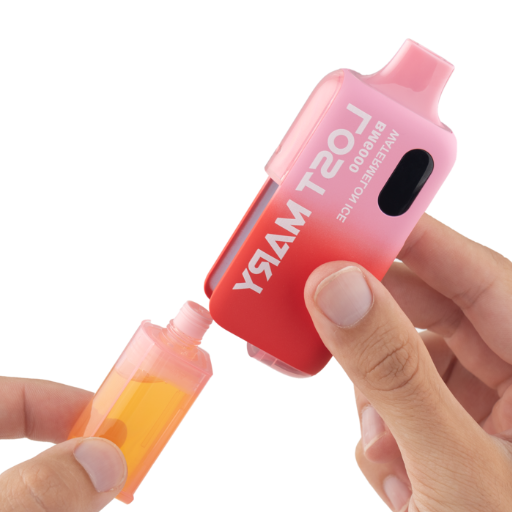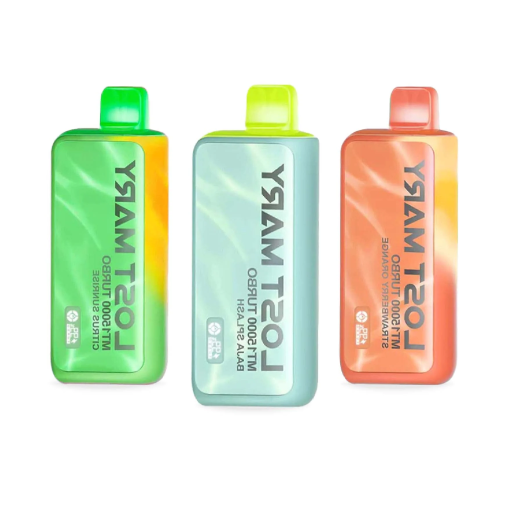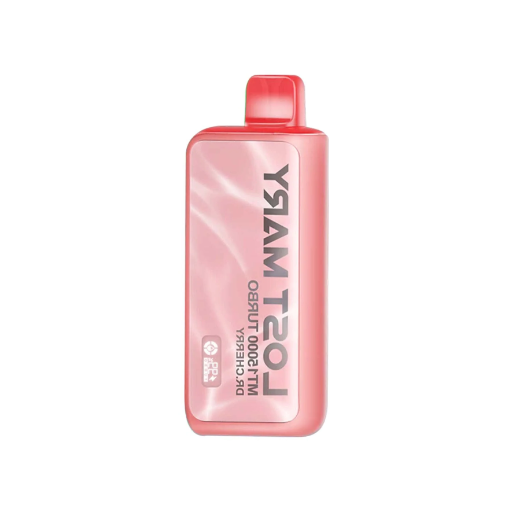When your Lost Mary vape device lights up but fails to produce any vapor, it can be both frustrating and perplexing. This guide aims to provide a thorough troubleshooting framework, helping you identify and resolve the most common issues associated with this problem. Whether it’s a clog in the airflow, depleted e-liquid, or battery-related malfunctions, understanding the root of the issue is crucial for a smooth vaping experience. By following the steps and detailed solutions outlined in this guide, you’ll be equipped to diagnose the problem effectively and get your device working as intended.
What causes a Lost Mary disposable vape to light up without producing vapor?

Understanding the common issues with Lost Mary BM600 and other models
If your Lost Mary BM600 or equivalent device lights up but does not produce vapor, the most common possible problems include airflow, e-liquid levels, or battery issues. First, a blockage within the airflow system (caused by debris build-up) can restrict effective vaporization. You can carefully examine the mouthpiece and airflow vents for any noticeable blockages and remove whatever is causing it.
Second, the absence of eged vapor can result from either a fully depleted or badly distributed e- liquid. Disposable devices like the BM600 have a limited supply of e-liquid, which means that when it runs out, they are no longer able to perform efficiently. You can try gently tilting or warming the device (without overheating it) to make the remaining e-liquid more accessible, but this is only a makeshift solution if your supply is running low.
Lastly, battery shortcomings are quite common as well. Disposable vapes, for instance, are fitted with rechargeable batteries; however, these batteries are designed to only work for the duration of the vape’s life. In such cases, a battery failure or problem with the internal components can lead to an LED light that works, but no vapor is produced. A normal disposable vape battery will produce about 3.7 volts. If this number drops significantly, or if there is a failure in the connections, the battery will not work. Regrettably, the design of disposables makes them unserviceable.
How e-liquid levels affect vapor production in disposable vapes
E-liquid levels play a critical role in determining vapor production in disposable vapes. When the e-liquid level is low or completely depleted, the wick within the cartridge cannot properly saturate, leading to insufficient vapor generation or a burnt taste during use. Disposable vapes are designed to function optimally only when the wick is soaked adequately, as a dry wick cannot transfer heat efficiently from the coil to the liquid.
- Wick Saturation: A Saturated wick provides maximum ease for the vaporizer in transferring heat meth cleared to produce vapor.
- Technical Justification: Poor saturation causes increasing coil temperature along with flavor and coil damage. The heating coil has to evenly reach the e-liquid.
- Observation Method: In case you can see, check whether the cartridge liquid level is visible or observe how the device performs – a little vapor or a scorching taste suggests insufficient liquid levels.
If you suspect issues with e-liquid depletion and cannot refill due to the disposable design, replacing the device is the most practical solution. Without sufficient e-liquid, the vape simply cannot perform to its specifications.
The role of airflow and potential blockages in vaping performance
The amount of air that passes through a device and how it is used has a huge impact on the efficiency of a vape device’s performance. If I pinpoint the airflow outlined in the device, it leads to a favorable user experience because of efficient vapor production and coil temperature stability. Airway blockages can severely disturb the well-functioning of the device, vapor output, flavor delivery, and coil overheating, and so on. These disturbances are often caused by condensing liquid airway, loosening components, and solid obstructive formations within the airway channel.
- Look at the Airway Obstruction: Look for physically visible debilities in the crassness. Airflow obstruction very frequently ranges from 1mm to 3mm from the airway ports, so any obstruction within the range will be a debility, whereas moving towards or after the range will be void.
- Device Sanitization: Look for condensation and loose solid particles; remove them using air blow and clean the airway with a soft microfiber cloth for the device to perform at its best.
- Adjustable Airflow Regulation: Any adjustable airflow must be set in accordance with the owner’s preference and the device. A greater airflow facilitates blowing more vapor while the device is placed wide open. Tighten the airflow for hotter vapor and increase the flavor output.
Ensuring the airway is void of blockage allows me to guarantee that the device functions at the highest performance level.
How can I fix my Lost Mary vape that’s not hitting but still lights up?

Troubleshooting methods to unclog the mouthpiece and airflow channels
For a Lost Mary vape device that blinks but is not hitting, the first step is to check for blockages at the mouthpiece or airflow channels. In incidents like this, there is usually some blockage caused by excess condensation or dirt obstructing airflow. Here’s how I would fix it:
- Examine the Mouthpiece: I would look at the mouthpiece to check if there is any debris or residue that is visible clogging it. Using a small soft tool like a cotton swab or toothpick, I would thoroughly scrape the inside. I would make sure not to apply damaging force to the device.
- Look At The Airflow Channels: I would closely observe the airflow inlet and see if there is anything that is clogging the device. If I have a can of compressed air handy, I would use that to blow out any dirt without applying too much force.
- Change Airflow Settings: In devices that have adjustable settings, I would set them wide open. This would allow air to flow through the device unrestrictedly. Generally, for optimal airflow, I would set the openings just right for puff production, which is around 1.5 to 3.0mm for different devices.
- Removing Moisture Buildup: Moisture buildup within the device can also impact airflow. I would disconnect all detachable parts and wipe them clean with a dry cloth, then securely reassemble the device.
I can fix most issues without putting the internal devices at risk by methodically resolving problems regarding airflow and keeping the functionality of the device within its predetermined limits.
Checking and cleaning the sensor to improve device responsiveness
For a device to perform at its optimum level, clean, functioning sensors are a necessity. Assess if the sensor has any type of dirt or obstruction in the first step. If any type of dirt or blockage is noticed, it is best to use a lint-free microfiber cloth with an alcohol concentration of 70% to clean the surface of the sensor. Make sure to let the sensor completely dry before reinserting or activating the device.
Checking the manufacturer’s technical specifications is crucial when cleaning electronic sensors because it will indicate safe handling measures or ranges that need to be adhered to, such as operating temperatures, which could be from -10°C to 50°C, or even sensitivity thresholds like 0.1 lux for light sensors. Any values severely going outside these ranges may lead to the device malfunctioning or having inaccurate readings.
If the device allows, it is best to recalibrate the sensors of the device so the responsiveness of the sensor is in conjunction with the operational requirements. To ensure uninterrupted accuracy and reliability for the device, constant maintenance and recalibration are key.
Addressing potential coil issues in Lost Mary disposable vapes
When dealing with the Lost Mary disposables, the first step to getting coil problems resolved is to identify the problem at hand. The common problems with a coil are low vapor outputs, a burnt sensation when using the device, or poor heating results across the board. These problems stem from overuse, misuse, and inconsistently produced devices or underused e-liquids.
When the device has a burnt taste while you are using it, this is a clear indicator that the coil or wick is probably dry. Under the usage Lost Mary devices are designed to have e-liquids already filled, so ensure that the device has not run out before using it. A burnt taste could stem from the device not producing enough vapor as well because the battery can also be weakened. Depending on the model, Lost Mary devices can operate within a voltage range of 3.3V to 4.2V, so if the device has depleted power towards the lower threshold, then there wouldn’t be enough energy to efficiently heat the coil, thus resulting in lowered vapor output.
The issue can also come from changeable manufacturing defects like weak coil resistance if the device is adequately charged and its fuel levels are normal but continue to have issues with not burning properly or producing heat. Lost Mary vapes generally have stronger production resistance that ranges from 0.8 ohms to 1.2 ohms, but if the device is tipped outside of the settings, then the heating will be disrupted and suffer.
Sadly, since disposable vapes can’t be repaired or have parts replaced, the only option for ongoing coil malfunctions is to toss it out. To reduce the chances of this happening, make sure to keep the vape in a proper place—not too hot or cold—and use it only for the intended purposes.
Are there specific troubleshooting steps for Lost Mary’s pod system?

Examining the integrated vape pod for proper connection and functionality
To integrate a vape pod and examine its connection and functionality, make sure to implement the following steps in order:
- Confirm Pod Connection: Verify that the pod is firmly fitted into the device. If the device is not functioning, then chances are that it’s not aligned correctly. When the pod is fitted into the equipment, it should click into place.
- Examine the Contact Points: Check the metal contact points to see if any debris is stuck around. A clear connection is needed, void of any obstruction for proper electricity flow. If needed, remove the residue using a dry cotton swab.
- Evaluate Battery Functions: Make sure that the battery of the device is adequately charged. For the device to function properly, the battery output should typically be between 3.7V and 4.2V volts. Low power will disrupt the pod system’s ability to produce vapors efficiently.
- Check Vape Coil Resistance: If it is possible, check the pod coil resistance. Generally speaking, for Lost Mary’s pods, the resistance value for a Loos Mary pod system is anywhere between 1.0Ω – 1.2Ω Ohms. If the values differ, there might be a concern with the coil or circuitry within the device.
- Testing the pod for leakage or damage: Inspect the pod for physical damage like cracks, leaks, and other deformities. Any breach in the pod’s structure can lead to device damage or optimal performance not being achieved.
These steps identify and resolve most of the issues related to the functionality of Lost Mary’s pod system. In case it does not resolve the problem, replacing the pod or seeking guidance from customer support is advisable.
How to check and adjust airflow in Lost Mary devices
To check the airflow on Lost Mary devices, start by looking at the airflow inlet. This is usually placed at the lower part of the pod or device body. Clean the inlet as best as you can, for dirt, moisture, or debris can restrict airflow, which will lead to poor performance. If you must, wipe the area using a dry microfiber cloth or small soft brush, as these tools will not scratch the surface.
For adjusting the airflow, check your specific Lost Mary device depending on what you have — some devices do have an adjustable airflow setting. Most models have a sliding control or rotating ring located at the bottom of the pod or airflow channel. You should be able to simply slide or rotate said mechanism to the most comfortable draw resistance. If you find it easier to pull the air in, increase the opening; and if it is harder, decrease the airflow opening.
- Make sure the airflow has no beating restrictions: check that the resistance range performed by the manufacturer matches the settings (usually ranges between 0.7Ω and 1.2Ω for mouth-to-lung optimal MTL vaping).
- Setting the power level: depending on the airflow settings, the optimal wattage changes. Usually, the 10W to 16W range for MTL setups is recommended to avoid overheating or dry hits.
- Airflow Port Measurements: For refined control over the inhalation style, the port diameter should be maintained between 1.0 mm and 1.8 mm.
Consistently extending the device’s life is possible by keeping the inlets clean and unobstructed while adjusting airflow within the specified technical limitations. If issues still arise, check that all adjustments made were done according to the manufacturer’s guidelines.
How can I prevent my Lost Mary vape from lighting up without hitting in the future?

Best practices for maintaining your Lost Mary disposable vape
When it comes to protecting my Lost Mary vape from unwanted activations, I make sure certain practices are followed:
- Ensure proper storage of the device: The device is not put in my pocket, bag, or anywhere else it might come into contact with lint and hair. This minimises the chances of interference with the sensors.
- Avoid harsh temperatures: The device is kept in a cool, dry place, as excessive heat or cold may cause the vape to malfunction and trigger an unintentional activation.
- Regularly check airflow inlets: The airflow ports or vents are checked and cleaned periodically to assure that they remain within the specified diameter range, which is 1.0mm to 1.8mm, as accurate configuration of the airflow is imperative for accurate functionality.
- Take precautions: Pressure must not be applied to the body of the vape as it could engage internal components and cause the light to turn on.
These practices, if followed along with specific technical modifications ensuring that the manufacturer’s specifications are met, will help me decrease the chances of unwanted activations while making sure the device is fully functional. If issues continue to be problematic, I will go back through these steps and reach out for assistance.
Understanding the proper use and storage of disposable vapes to extend their life
I have rendered my disposable vapes more efficient by following precise technical methods for utilization and storage, ensuring longevity as best as I can.
- Temperature range for storage: The device is stored in a controlled environment between 10 and 30 degrees Celsius: any extreme heat or cold could ruin the device’s battery as well as the quality of the e-liquid.
- Avoid direct sunlight and moisture: To prevent the vape liquid from evaporating or leaking, I store the vape in a cool and dry location. The storage helps prevent corrosion of the casing as well as internal components.
- Charge state monitoring: The majority of disposable vapes come with nonrechargeable batteries. Therefore, I consume e-liquid efficiently within the predetermined time frames to avoid overstraining.
- Proper orientation during storage: When the device is not in use, I ensure that the device is upright to reduce the possibility of leaking and to keep the wick saturation in the coil assembly consistent.
By adhering to these techniques, I ensure the effective performance of the disposable vape while boosting the longevity of the device. In addition, observing these conditions prevents technical complications and aids in decreasing waste from equipment failures.
Are there any safety concerns when a Lost Mary vape lights up but doesn’t produce vapor?

Identifying potential issues with the device’s battery or power system
If a Lost Mary vape lights up without producing vapor, the issue is likely to be the battery or the power delivery component. To rectify the issue, I tried out the following technical checks:
- Battery Output Voltage: I check whether the battery is supplying the proper voltage to the coil assembly, which is usually between 3.2V and 4.2V in disposable vapes. If the voltage is too low, the coil may not heat up sufficiently.
- Connection Integrity: I check both ends of the battery and the coil to see if there is any corrosion or misalignment that is obstructing the power flow. If there is corrosion or debris, cleaning the contact surfaces with a dry cotton swab will help.
- Battery Depletion: I check to see if the battery has been depleted. Non-rechargeable models may show some lighting activity even if they are powering down.
- Internal Short Circuit: I see whether the battery protection circuit has tripped. This is a safety feature made to avoid the consequences of overheating or overcurrent, so I ensure that the device is put away safely so as not to be impacted.
If these checks fail to resolve the issue, I conclude that internal battery failure or damage may be the cause, warranting disposal and replacement in adherence to local e-waste regulations.
When to discontinue use of a malfunctioning disposable vape
The moment a disposable vape starts displaying issues that put safety, functionality, or usability at risk, it should be stopped being used immediately.
- Severe Overheating: If the device reaches abnormally elevated temperatures while in use, there may be a problem with the battery or circuit. The internal temperature of the circuitry should not exceed 60°C (140°F). Discontinuation is needed to prevent thermal runaway or fires.
- Battery Leakage: More liquid seeping out of the device, especially the battery area, is a clear indicator of some internal damage. Lithium-ion batteries can leak toxic and flammable electrolytes when compromised.
- Irregular Power Output: If the vape starts experiencing a power alteration such as random activation, failure to power on, or not heating the coil, even though there is sufficient voltage in the battery (disposable vapes function with a voltage range of 3.2V to 4.2V) this is indicative of failutre in the internal electronics.
- Physical Damage: Many forms of physical harm to the device, including swelling, cracks, or dents, ruin both the e-liquid chamber and battery, which places the device at risk of leakage, short circuiting, or even coming into contact with dangerous chemicals.
- Resolute Problems: When a device fails to work, and troubleshooting methods like checking the battery, assessing the connection, and looking for internal short circuits have been done, then it is wise not to use the device at all as it can be more harmful than helpful.
When disposing of these devices, it is important to follow local guidelines regarding electronic waste to promote environmental safety and reduce personal risks. Always make sure that safety is given more priority than attempts to salvage potential valuables from defective devices, as this can be quite dangerous.
Reference sources
Construction of electronic cigarettes
Frequently Asked Questions (FAQs)
Q: Why is my Lost Mary vape lighting up but not hitting?
A: There are several reasons why your vape is not hitting even though the indicator light is on. Common issues include a clogged airflow, depleted e-juice, a burnt coil, or a faulty battery. Troubleshooting these areas can help resolve the problem and get your vape working again.
Q: What are some methods to fix a Lost Mary vape that isn’t hitting?
A: Some methods to fix your vape include checking for clogs in the airflow hole, ensuring there’s enough vape juice, cleaning the device, checking the battery connection, and replacing the coil if necessary. If these steps don’t work, the device may need to be replaced.
Q: How can I tell if my Lost Mary vape is clogged?
A: If your vape is lighting up but not producing vapor when you inhale, it may be clogged. Check for any blockages in the airflow or mouthpiece. You can try cleaning these areas with a cotton swab or blowing gently through the mouthpiece to clear any obstructions.
Q: What should I do if my Lost Mary vape is empty?
A: If your vape is empty, it won’t produce vapor even if the light turns on. For refillable models, simply refill as needed with your preferred e-juice. For disposable vapes, if the device is empty, it has reached the end of its lifespan and needs to be replaced.
Q: How do I know if the atomizer in my Lost Mary vape is faulty?
A: A faulty atomizer can cause your vape to light up but not hit. Signs of a faulty atomizer include a burnt taste, little to no vapor production, or unusual sounds when inhaling. If you suspect the atomizer coil is the issue, replacing it may solve the problem.
Q: Can a weak battery cause my Lost Mary vape to light up but not hit?
A: Yes, a weak battery may provide enough power for the indicator light to turn on but not enough to heat the e-juice and produce vapor. Try charging your device fully. If the problem persists, the battery may be worn out, and the device may need replacement.
Q: What should I do if my Lost Mary vape still isn’t hitting after trying these solutions?
A: If your vape is not hitting after trying these troubleshooting steps, it may have a more serious internal issue. For refillable devices, please read the user manual for additional guidance or contact the manufacturer’s customer support. For disposable vapes, if the device still isn’t working, it’s best to replace it with a new one.







